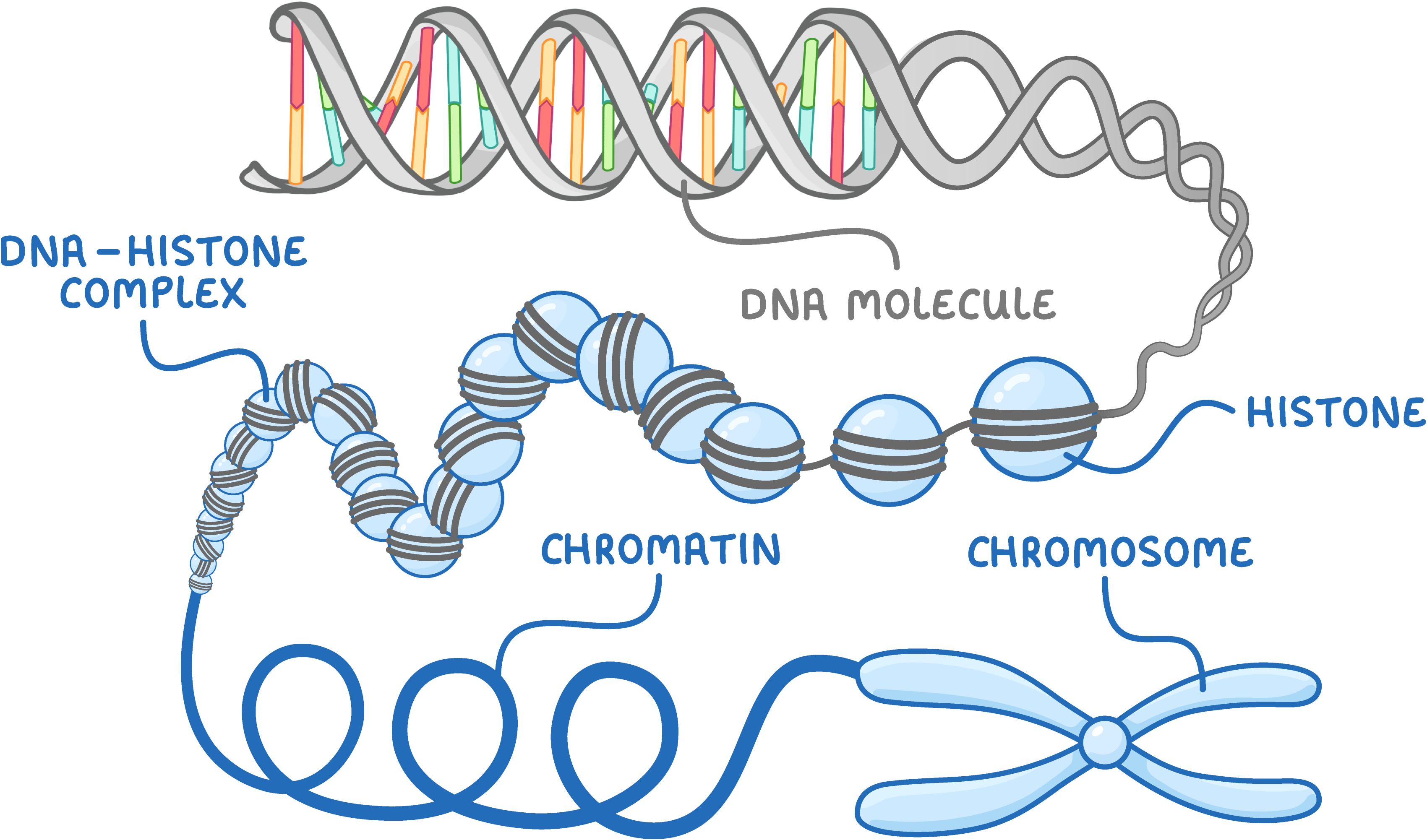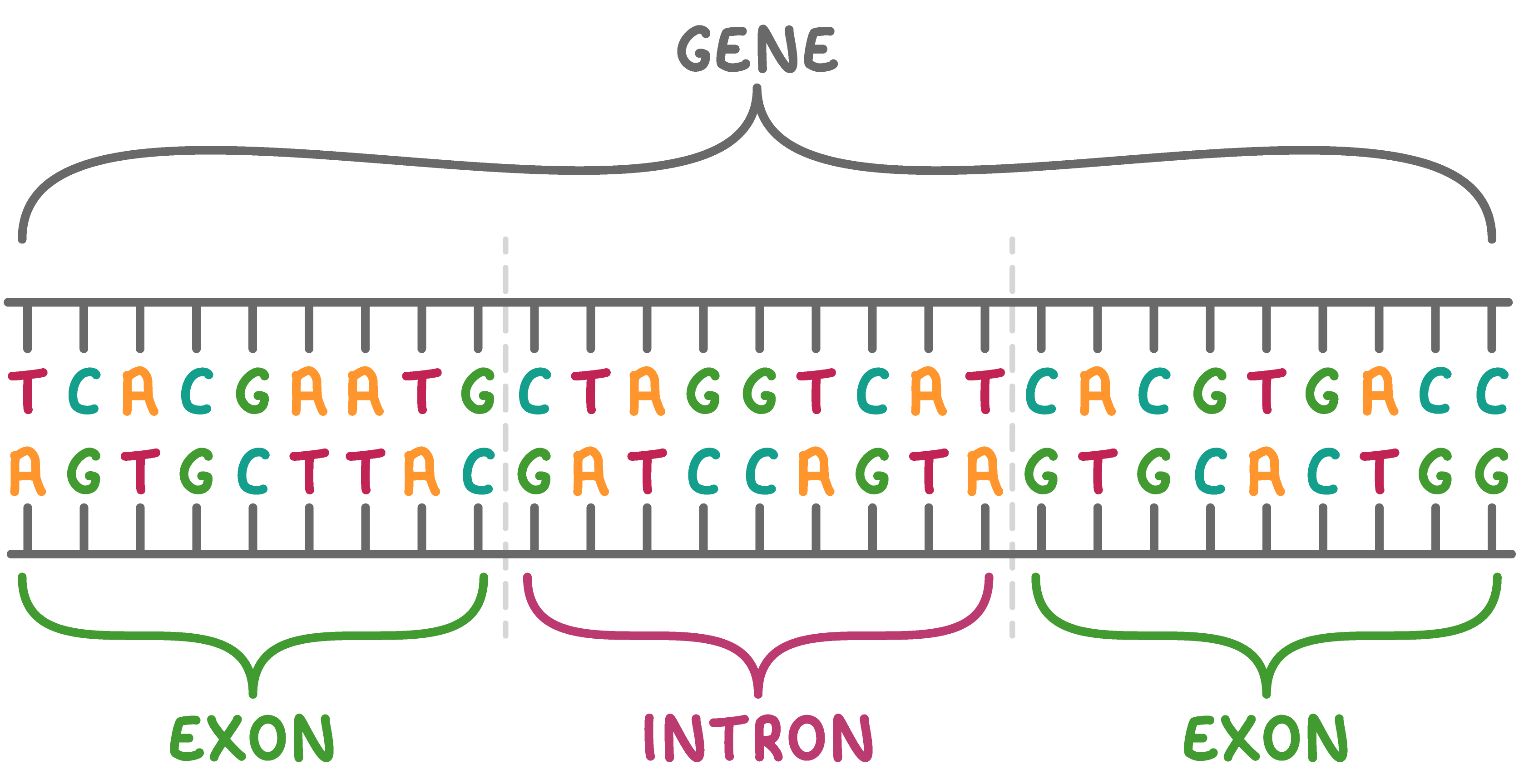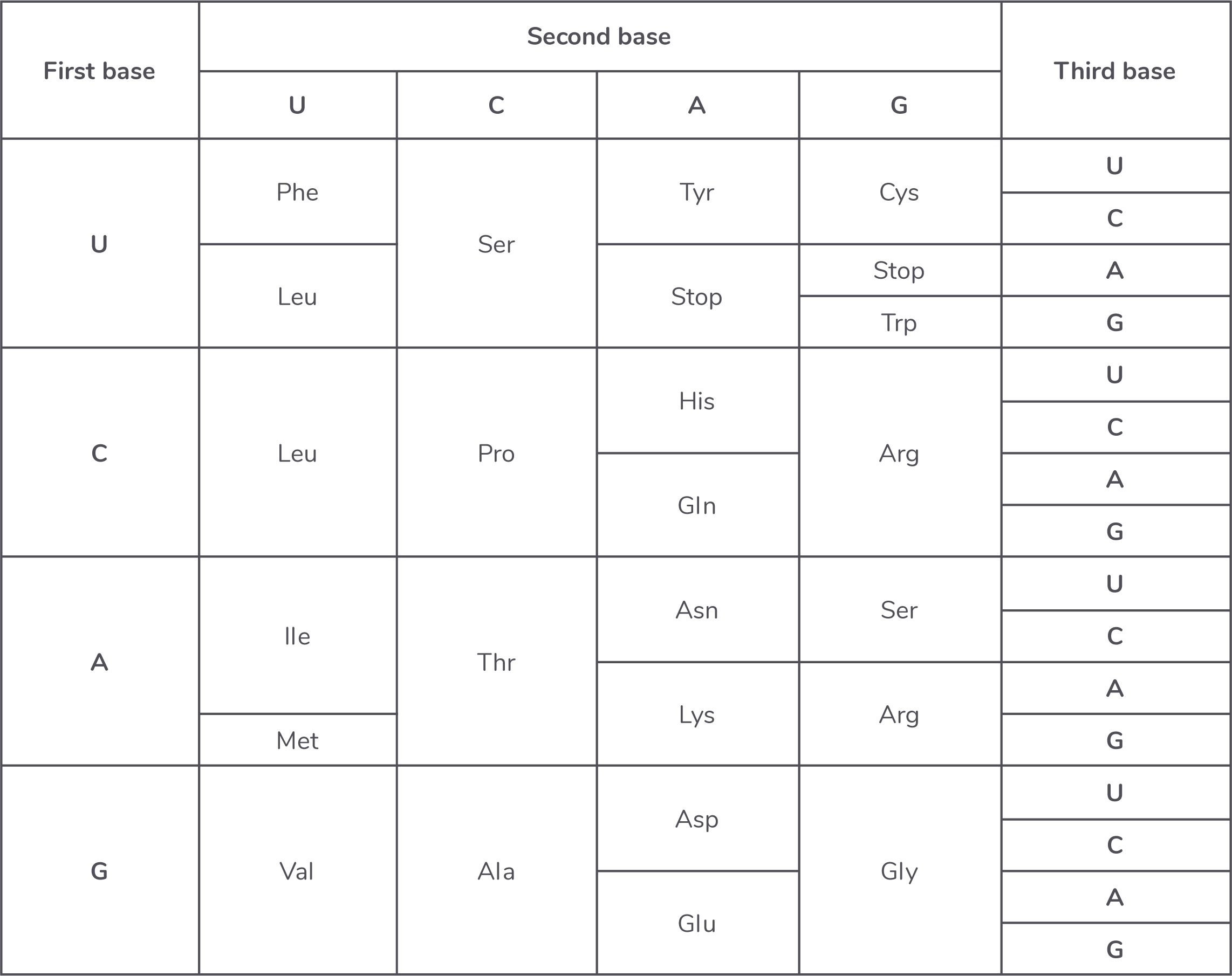Genes and the Genetic Code
This lesson covers:
- How DNA is organised into chromosomes
- How DNA is stored in eukaryotes and prokaryotes
- The difference between introns and exons
- The features of the genetic code
DNA is condensed into chromosomes DNA molecules are incredibly long and must be tightly packed up to fit within the nucleus of a eukaryotic cell. |
 DNA molecules are wound around proteins known as histones to form a DNA-histone complex. These complexes coil further to pack the DNA into chromosomes whereby each chromosome contains just a single molecule of DNA. |
DNA in eukaryotes and prokaryotes Eukaryotic and prokaryotic cells store DNA in slightly different ways. |
Prokaryotic cells:
Eukaryotic cells:
|
Eukaryotic cells also contain DNA in their mitochondria and chloroplasts. This DNA, like in prokaryotes, is short, circular, and not associated with histones. |
DNA contains genes A gene is a short section of DNA that codes for a polypeptide (a protein).  In eukaryotes, genes consist of regions known as exons and introns:
|
Each gene is located at a specific position along a chromosome known as a locus. |
The complete set of genes within a cell is known as the genome. The full range of proteins that a cell is capable of producing is known as the proteome. |
The genetic code The genetic code refers to the sequence of bases that code for amino acids.  Scientists found that each amino acid is coded for by a sequence of three DNA bases, known as a triplet. |
The genetic code has the following features:
|
How to interpret tables that show codons for amino acids The genetic code can be summarised into a table as shown below. The code is often shown as mRNA bases rather than DNA, so the base uracil (U) is shown instead of thymine (T).  |
Each amino acid is coded for by a sequence of three mRNA bases known as a codon (similar to a DNA triplet). We can see from the table above, that many amino acids are coded for by multiple codons. For example, the amino acid phe (phenylalanine) is coded for by codons UUU and UUC. |